
Civil Architecture's talk on the Temple of Debod at Fonte space in Madrid. Courtesy of MAYRIT Biennial.

Civil Architecture's Outstanding Universal Value, 2022, on the Temple of Debod. Courtesy of MAYRIT Biennial.
In the past, decades had distinct visual personalities, since taste in fashion and design was shaped by what you saw at the movies, in newspapers and magazines, or on TV. The digital revolution has fragmented the information landscape into a plurality of voices, many of them previously excluded and who are now contributing to the debate. MAYRIT, the young Madrid design biennial, which had its inaugural showing this past summer under the direction of architect Miguel Leiro, is a good example: mixing physical and virtual presentations, the three-week event (June 16th through July 6th, 2022) featured contributors who are mostly under 30 and based in Spain or the Spanish capital — a demographic that might have had a much harder time getting visibility in the past.
The theme of the biennial was “The Drowned World(s),” inspired both by the JG Ballard novel and by the biennial’s own name, Mayrit, which is the old Arabic denomination for Madrid and roughly translates to “place abundant in water.” Ballard’s 1962 novel, set in 2145, depicts a planet where climate change has caused temperature and sea-level rise, forcing what’s left of humanity to migrate to the poles. In 2022 Madrid is more likely to suffer from drought than drowning, but the Spanish capital is being touted by some as “the next Berlin,” with its combination of low rents, sheer enthusiasm, and utter lack of pretentiousness, which make it an ideal place for a budding design scene to thrive. PIN–UP toured both the urban and suburban parts of Madrid — from Usera to Tetuán — to pick our five MAYRIT favorites.
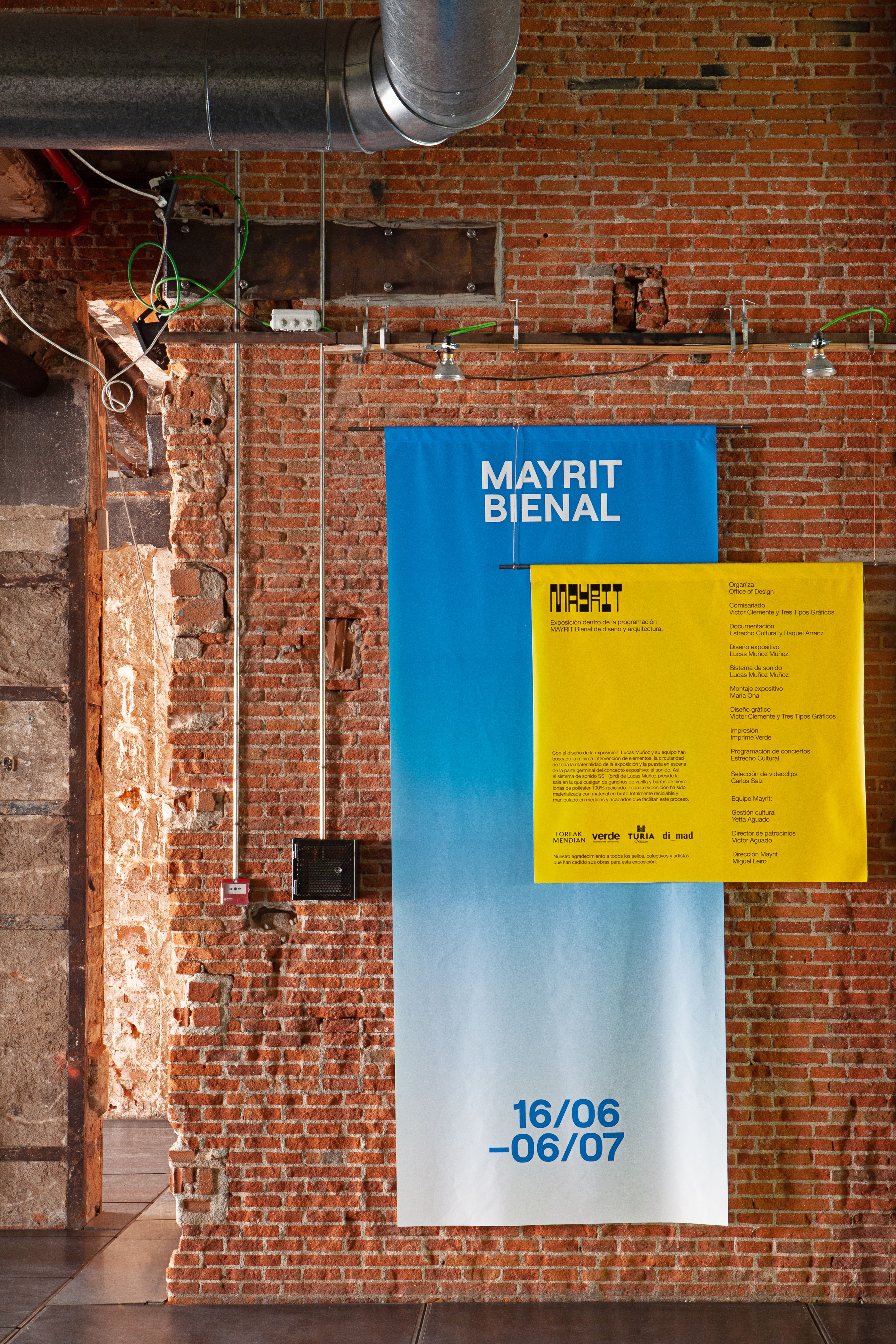
MAYRIT Biennial banners in ESCENA at the Matadero Madrid Design Center. Photographed by Asier Rua. Courtesy of MAYRIT Biennial.
OUTSTANDING UNIVERSAL VALUE
Invited by Santiago-de-Compostela-based architect Sofía Blanco Santos, Kuwaiti-Bahraini practice Civil Architecture (Hamed Bukhamseen and Ali Ismail Karimi) presented their research on the Temple of Debod. The 2,200-year-old structure was moved stone by stone from Egypt to Madrid in 1970–72 and today is sitting high and dry in the Parque del Oeste. It escaped drowning in its original location thanks to the UNESCO-organized international effort to save ancient-Egyptian archaeological sites from the damming of the Nile at Aswan — in gratitude for Spain’s help in moving the Abu Simbel temples, Nasser’s government gifted the Debod building. That, at any rate, is the official history. But why, wondered Bukhamseen and Karimi during their talk at Fonte studio, did Spain receive a temple when other countries, who contributed far more, did not? What pressure was Egypt under to give away its treasures? What meaning does this building now have, out of context, shorn of its third gateway, and exposed to the rigors of Castilian winters? Should the temple, as some have suggested, be returned? There are no easy answers, but 50 years on these questions deserve to be asked.

Civil Architecture's talk on the Temple of Debod at Fonte space in Madrid. Courtesy of MAYRIT Biennial.
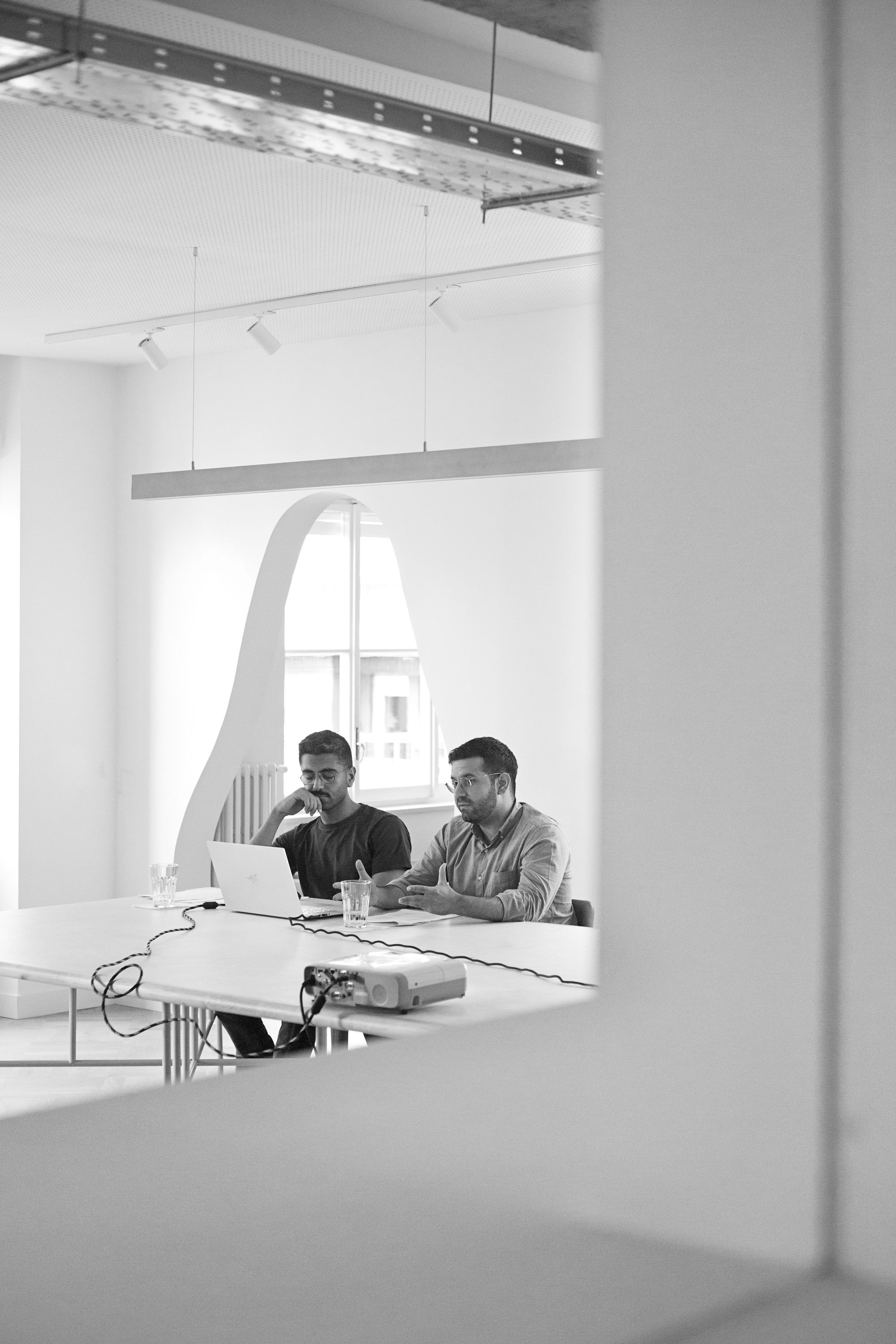
Hamed Bukhamseen and Ali Ismail Karimi of Civil Architecture, presenting their research on the Temple of Debod at Fonte space in Madrid. Courtesy of MAYRIT Biennial.
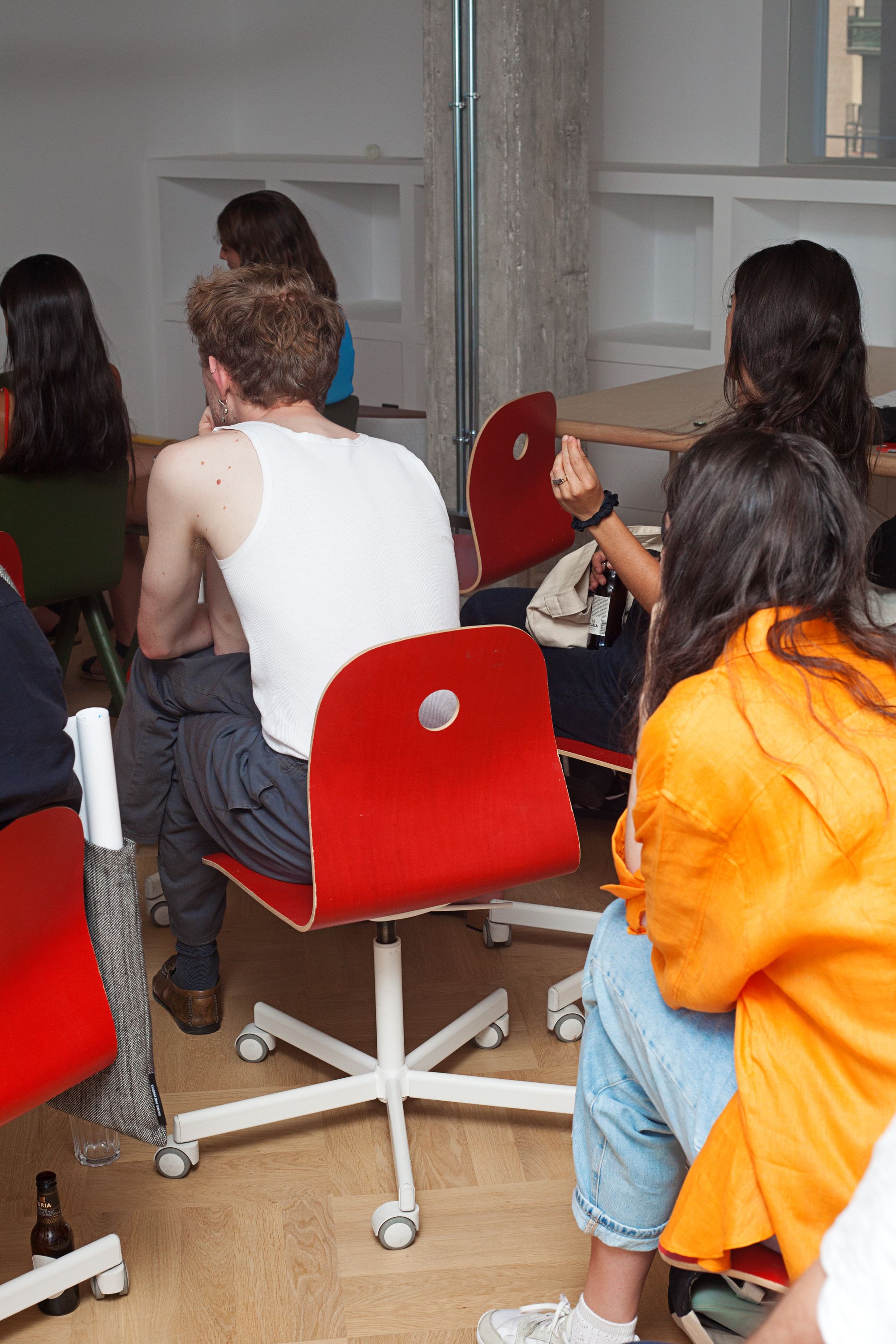
The audience at Fonte space in Madrid during Civil Architecture's talk on the Temple of Debod. Courtesy of MAYRIT Biennial.
EXPOSICIÓN DE BIENES
“Can shopping be critical?” wonders Madrid-based designer Sina Sohrab, a question inspired by a visit to both the Rastro, the city’s flea market, as well as its Museo de las Artes Decorativas. The problem, he felt, with decorative-arts museums is that objects designed “to be purchased, used, and lived with … lose purpose when they cannot be part of our everyday environment. When we put them behind glass, we risk losing everything that makes them relatable.” Sohrab, a recent arrival in the Spanish capital from New York City, had been struck by the fact that in the Rastro many of the objects for sale resembled those in the museum’s collection. To bring back the missing interactions — the possibility of handling, haggling for, taking home, and using the objects — he organized a flea market right outside the museum’s doors, proposing a selection of items almost identical to some of those displayed inside. A second part of the project, curated by artist and product designer Joel Blanco, will open inside the museum this fall.

Installation view of Sina Sohrab's Exposición de Bienes, 2022, presented outside the Museo Nacional de Artes Decorativas. Photographed by Asier Rua. Courtesy of MAYRIT Biennial.
EL CIELO DE ABAJO
Trained as an architect in Barcelona, Mallorca-based Marta Armengol seeks to blur “the boundaries between architecture, design, and scenography and between installations and sculpture” so that “new ideas and innovation can flourish.” In her process, she’s also interested in material properties and error as a way of opening up new terrain, with a particular penchant for glass and the crystalline imperfections it can surprise us with. For MAYRIT, she imagined The Sky Below, where glass sculptures transport the viewer into a watery wasteland of clouds, formed from the debris of a lost urban environment in a dystopian future.
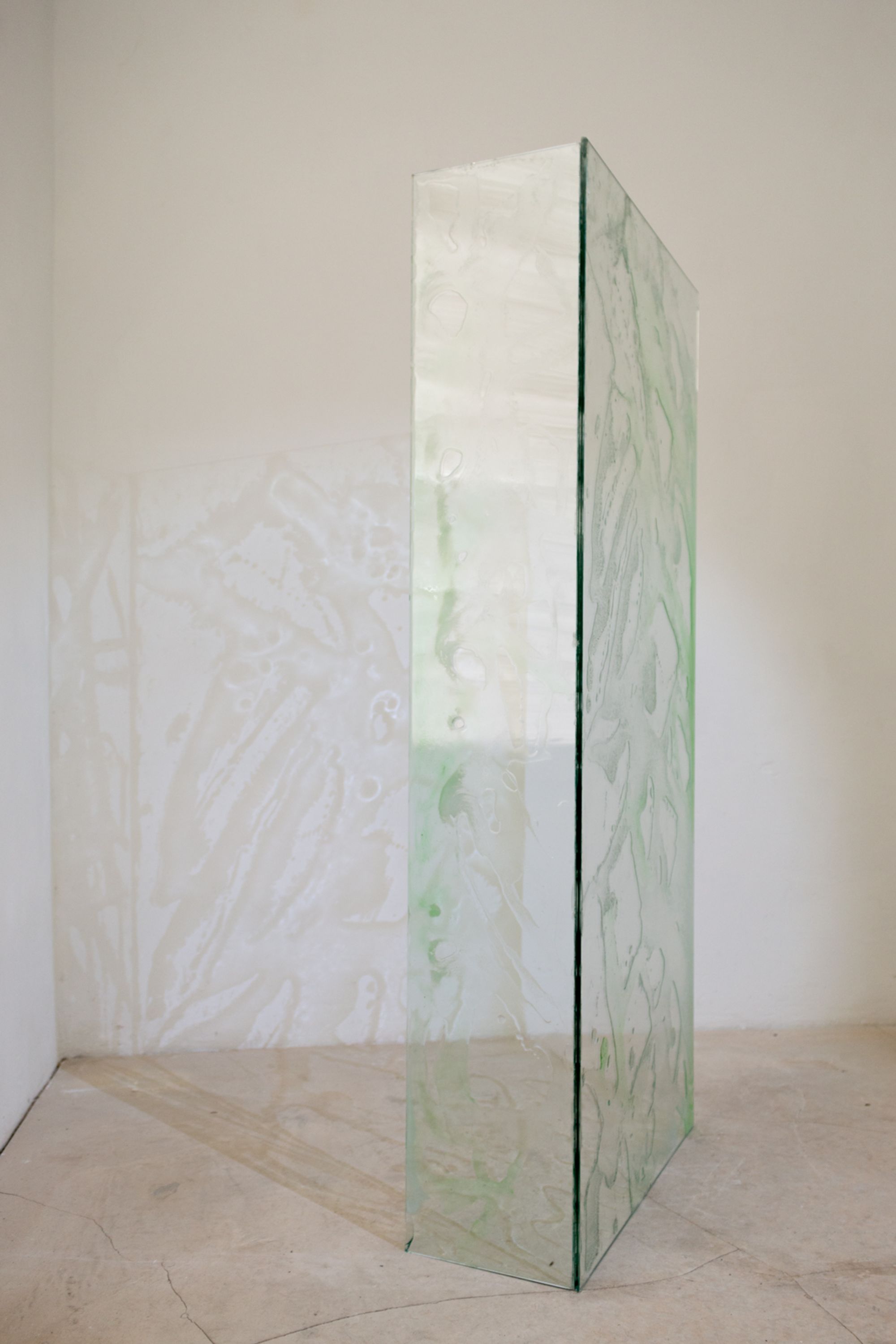
Marta Armengol's The Sky Below, 2022. Photographed by Rebecca Sayago. Courtesy of MAYRIT Biennial.
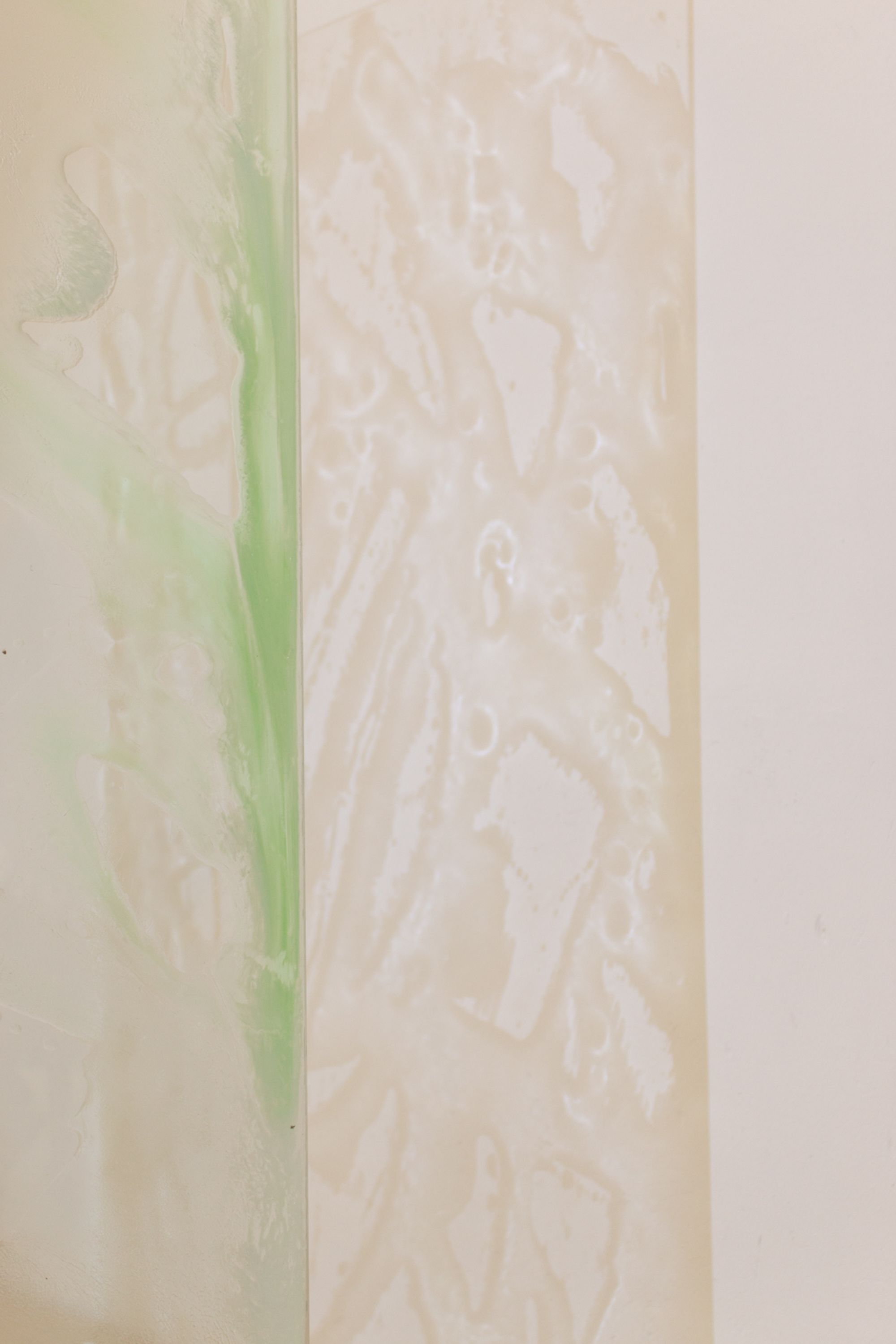
Detail of Marta Armengol's The Sky Below, 2022. Photographed by Rebecca Sayago. Courtesy of MAYRIT Biennial.
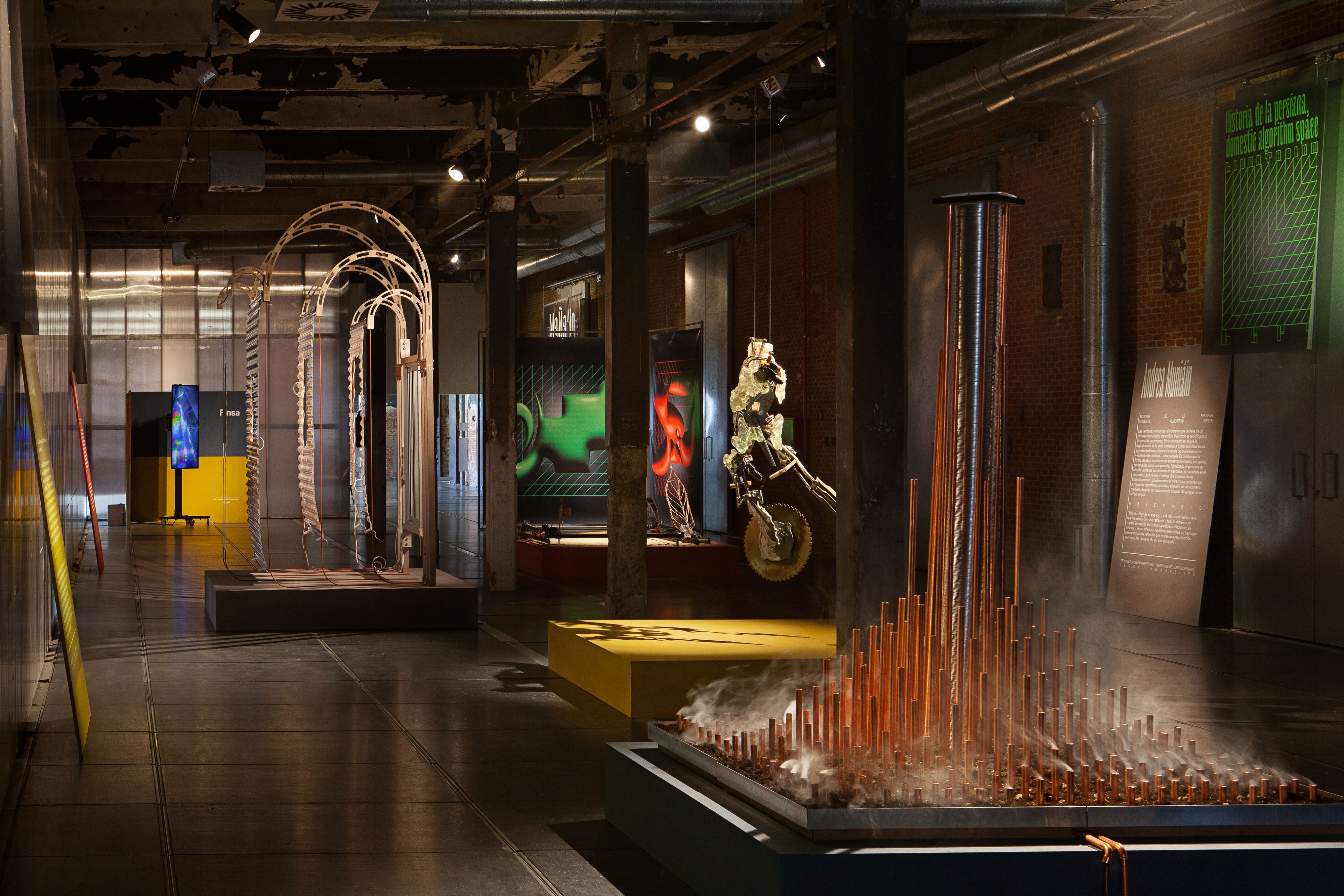
Install view of Mañano, 2022, at the Matadero Design Center. Commissioned by Joel Blanco. From left: Andrea Muniáin, Historia de la Persiana, Domestic Algorithm Space, 2022; Joan Vellvé, Post Neo Malthusianism, 2022; Carlos Sáez, Exo Corpse, 2022; RAFT, Carbon Sync, 2022. Photographed by Asier Rua. Courtesy of MAYRIT Biennial.
MAÑANO
At Madrid’s Matadero Design Center, located in a former slaughterhouse on the outskirts of the historic center, Joel Blanco commissioned four visions for 2030 based on the quadrants of the political compass. For the authoritarian right, RAFT — a Madrid-based “research and strategy platform mapping ecologies, cultures, and infrastructures to rethink how they interface with each other” — imagined Carbon Sync: eight years from now, atmospheric carbon-capture and -storage technologies have become “the fundamental and hegemonic pillar of a carbon-neutral society … in which carbon is the exchange system.” In RAFT’s dystopian model, a forest of copper chimneys rose up menacingly from former agricultural land. At the opposite end of the spectrum, on the libertarian left, Alicante-trained architect Andrea Muniáin imagined Historia de la Persiana, Domestic Algorithm Space: in an ever-more-digitized world, windows now double up as device screens. “What do we see when we look at them?” she asks. “A society that, through normative algorithms, acquires a mediated, targeted knowledge, one that is incapable of escaping its own reflection.” Over on the authoritarian left, Barcelona-born designer Joan Vellvé devised the Ballardian installation Post Neo Malthusianism, in which humanity has been reduced to tribal nomadism in a drastically depopulated and inhospitable world, and therefore needs various makeshift tools and vehicles if it is to survive out in the desert terrain. Finally, for the libertarian right, Valencia-born multimedia artist Carlos Sáez imagined Exo Corpse, an aggressive-looking piece of open-source self-defense hardware to help you survive on a planet where weak government has let market forces run wild. Which of the four scenarios is the more plausible? No doubt all of them will come true somewhere to a certain extent…
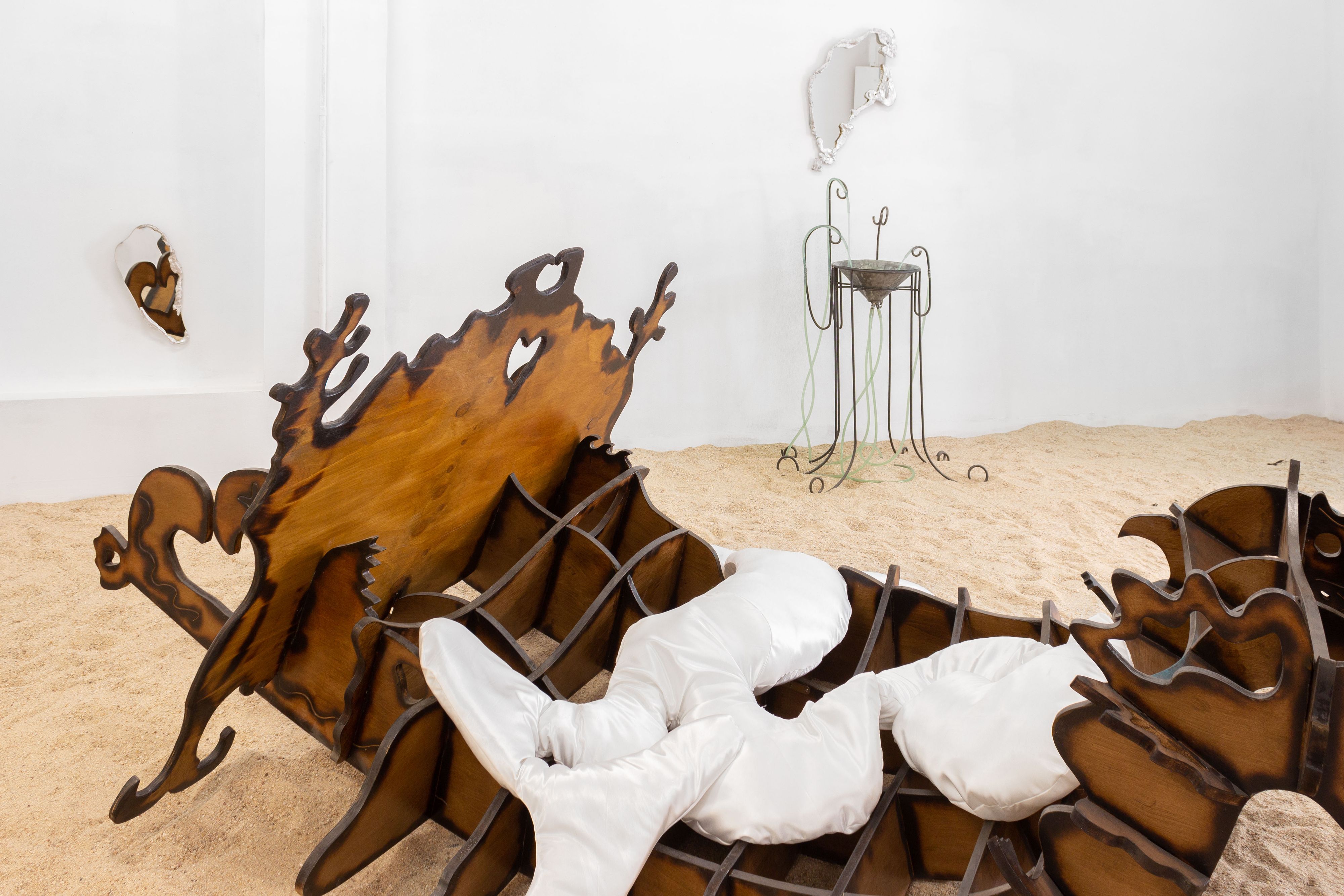
Installation view of Casa Antillón's UnderBlue, 2022, at El Chico. Front: Rocking Bed. Back, from left: Mirror III; Mirror II and Fountain. Photographed by Luis San Gregrorio. Courtesy of MAYRIT Biennial.
UNDERBLUE
In contrast to the angst at Matadero, Madrid-based art-and-design collective Casa Antillón looked to the poetry of a drowning planet with their oneiric UnderBlue, shown at El Chico. “A journey to the unconscious in the underwater depths,” the exhibition sought to conjure up a “world where monsters are born when reason dreams.” Various freak furnishings — a rocking bed like a siren’s sleigh, a lamp like Neptune’s harpoon, a fountain perched high on tentacular curlicues — conjured up The Little Mermaid on acid: queer, punk, and totally Madrid.
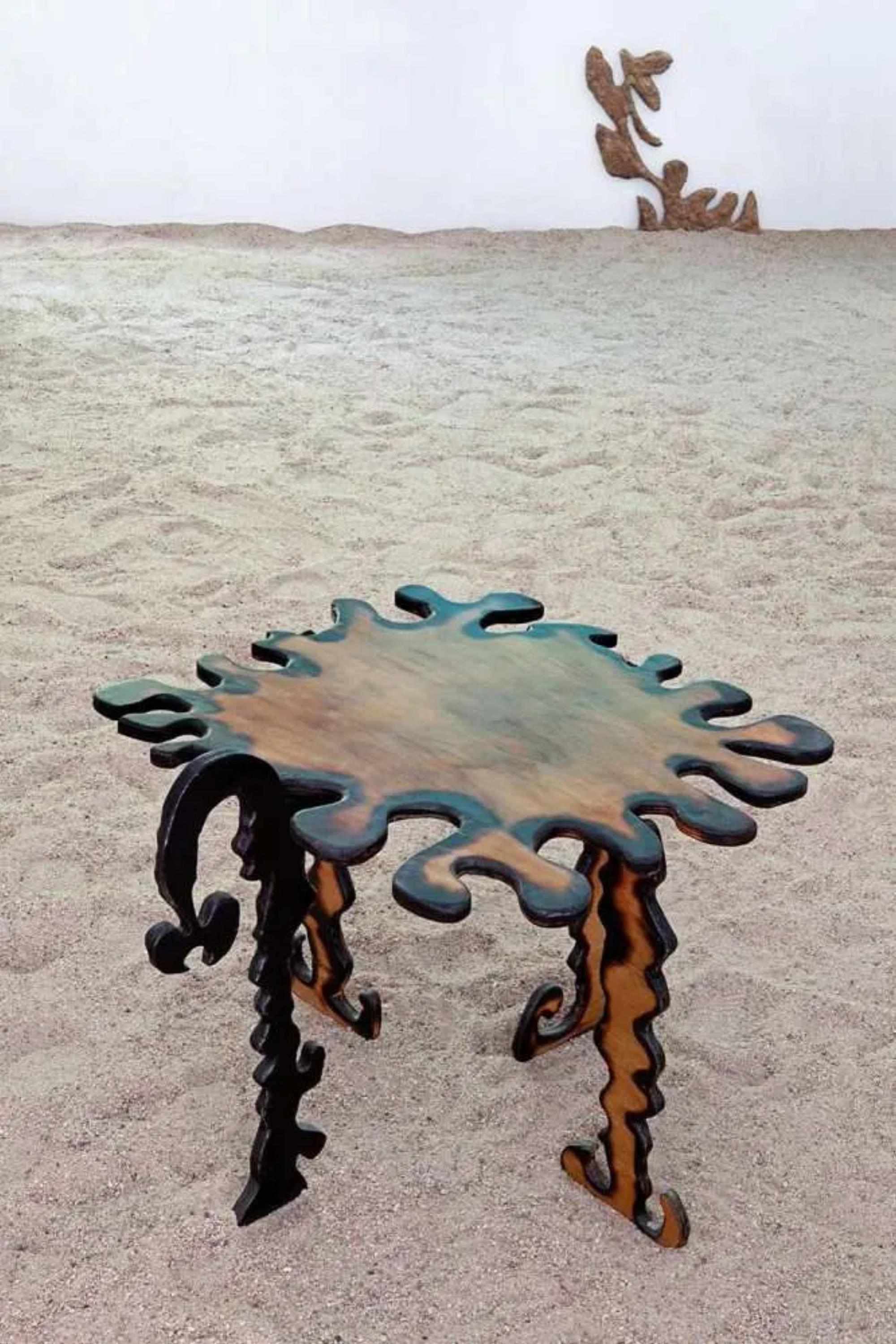
Casa Antillón, Mesita de Noche table, 2022. Part of the exhbition Underblue. Photographed by Asier Rua. Courtesy of MAYRIT Biennial.

Casa Antillón's Mirror II and Fountain, 2022. Photographed by Luis San Gregrorio. Courtesy of MAYRIT Biennial.
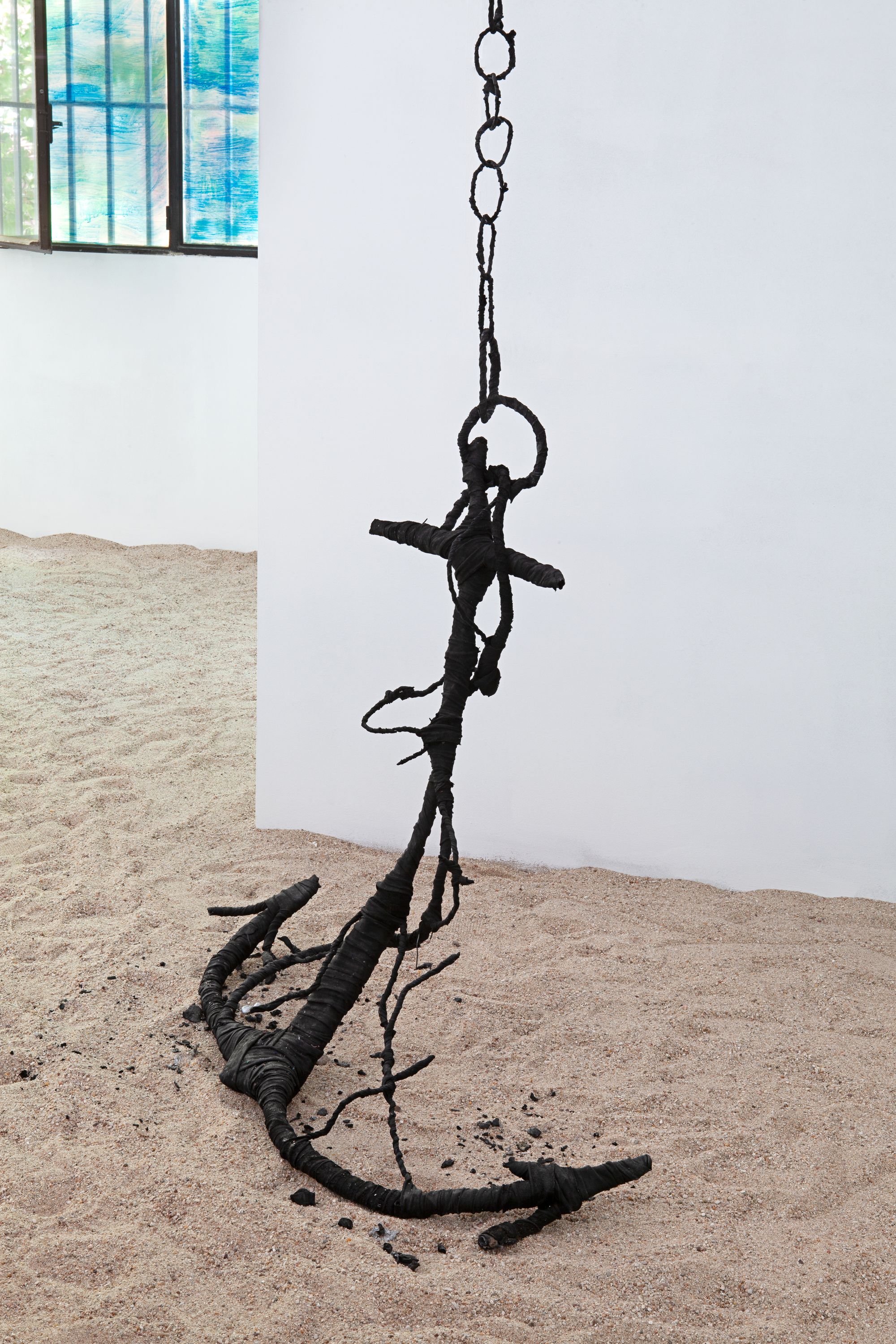
Casa Antillón, Ancla, 2022. Photographed by Luis San Gregrorio. Courtesy of MAYRIT Biennial.
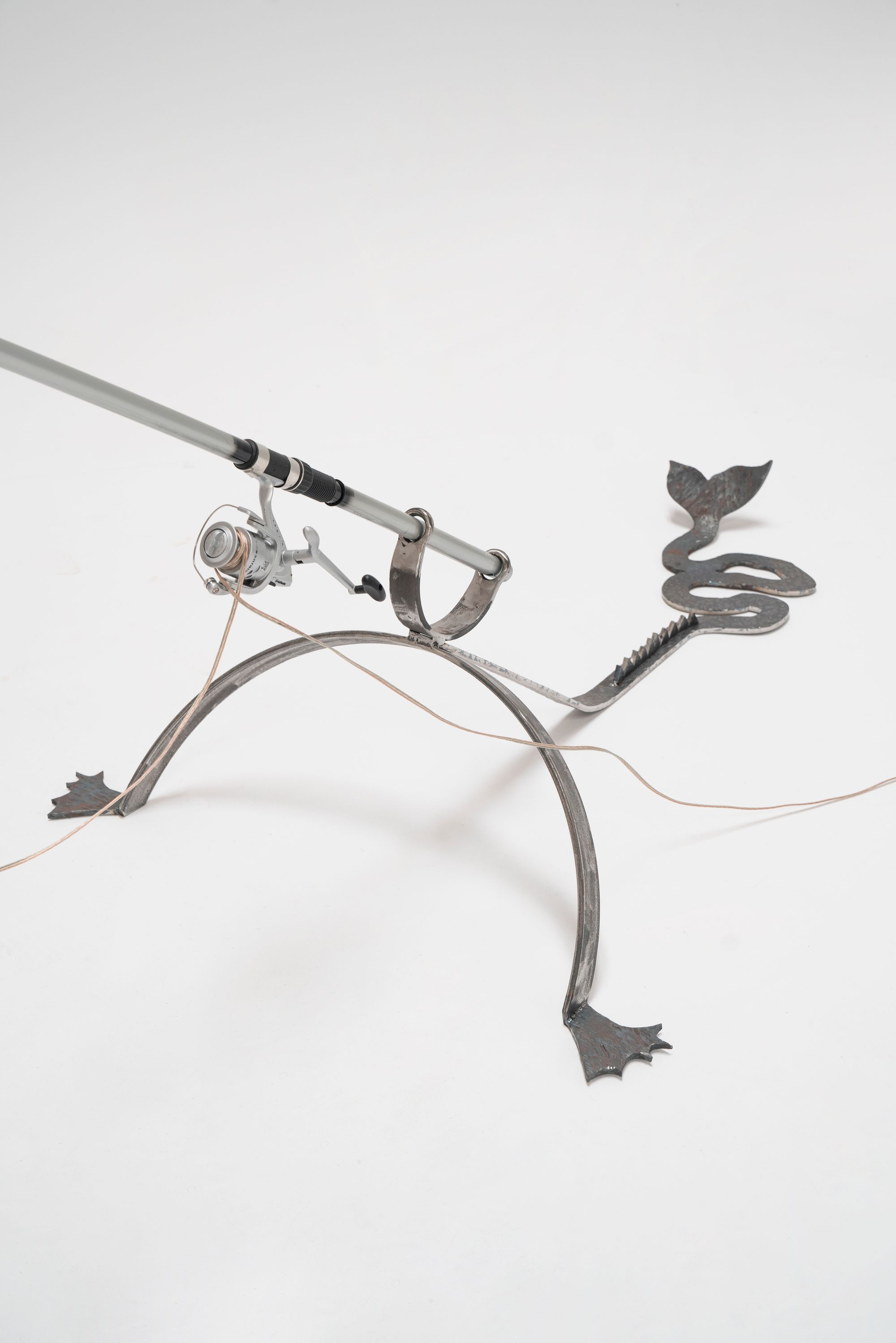
Detail of Casa Antillón's floor lamp. Made from fishing rod, steel and biofabric. Photographed by Claudia Maurino. Courtesy of MAYRIT Biennial.